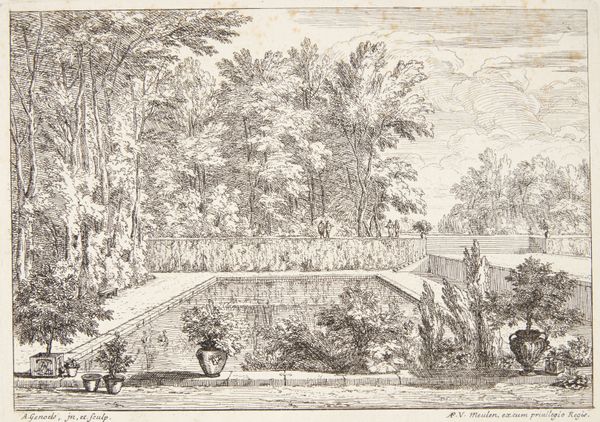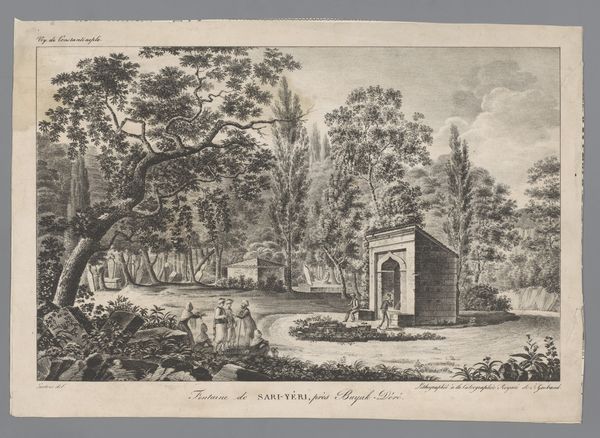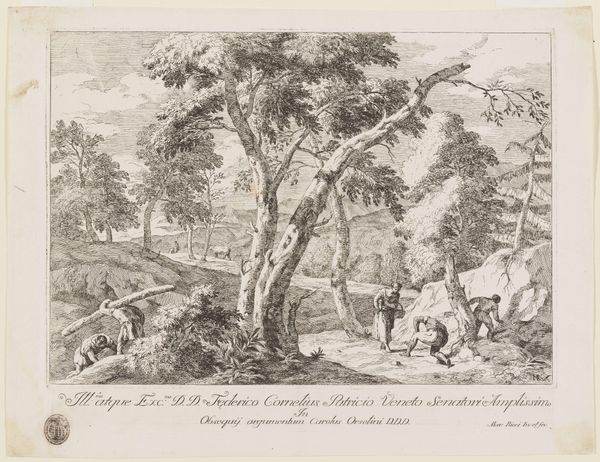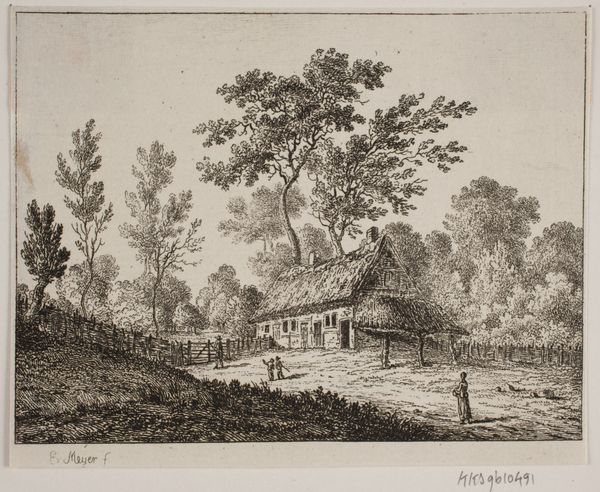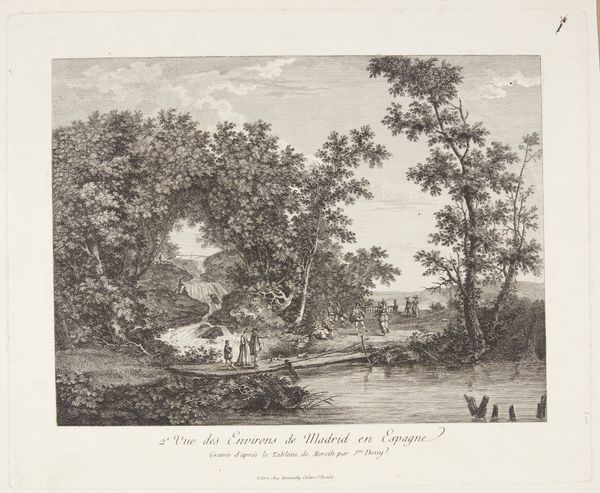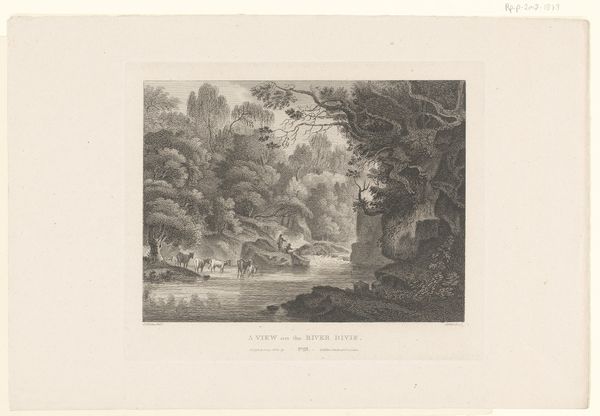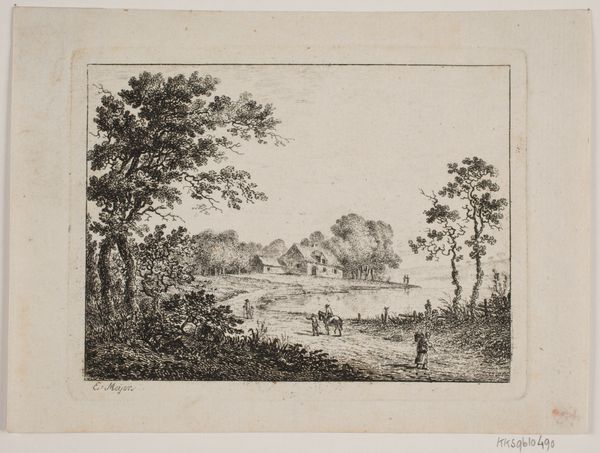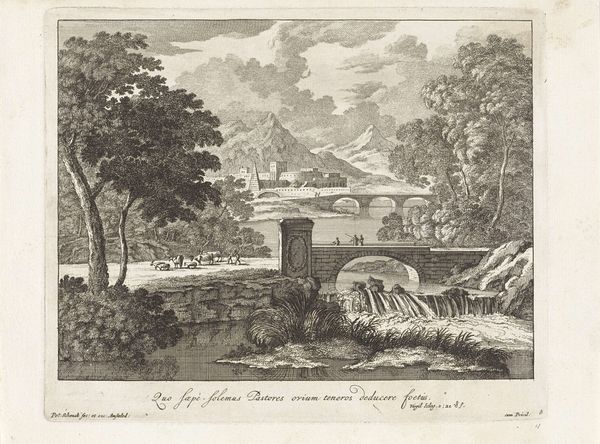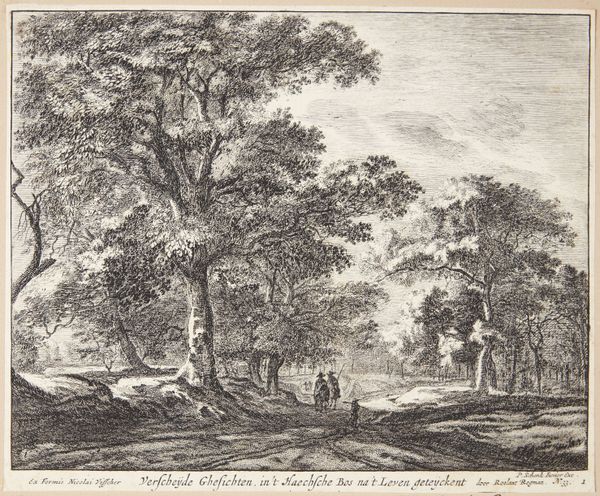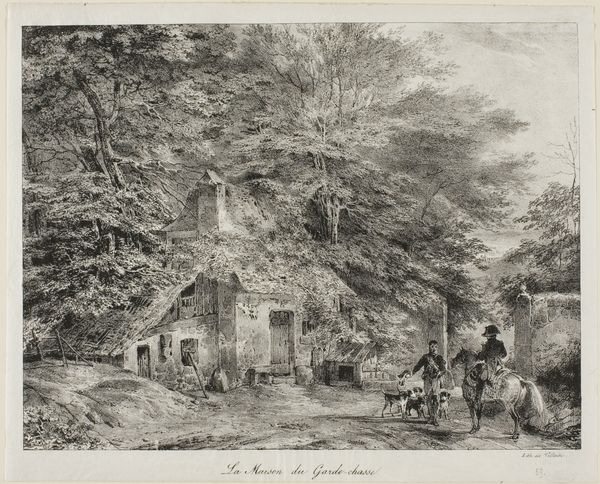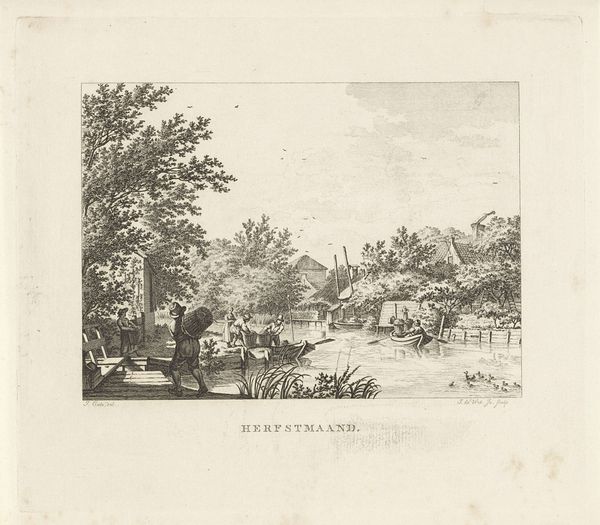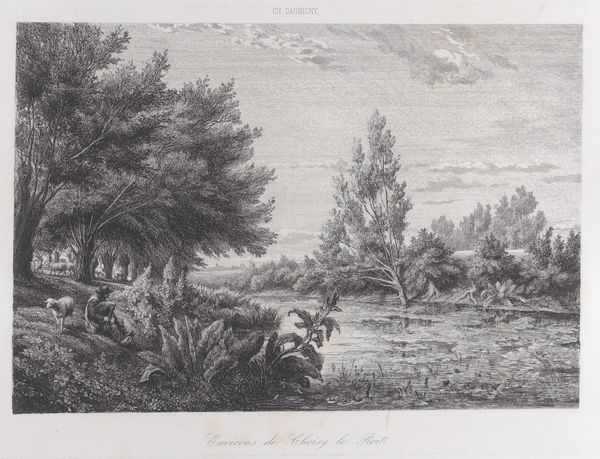
drawing, print, etching, paper
#
drawing
#
neoclacissism
# print
#
etching
#
pencil sketch
#
landscape
#
etching
#
paper
#
genre-painting
Dimensions: 298 × 445 mm (image); 333 × 463 mm (sheet)
Copyright: Public Domain
This print, "The Fisherman," was made by Quentin Pierre Chedel in the 18th century using etching and engraving. These are essentially linear techniques, where the artist incises lines into a metal plate and then uses ink to transfer that design onto paper. The material qualities of the copper plate and paper are crucial. The fine lines suggest a highly polished plate, while the paper has a slightly rough texture, giving the print a subtle depth. The process involved a division of labor. The artist not only designed the image, but also had to be skilled in metalworking and printing. These crafts were highly specialized, reflecting the social organization of the period. Prints like this were often made for a growing middle class, eager to consume images of leisure and the natural world. Understanding the materials and processes behind this print gives us a richer appreciation for the artistic skill and the social context in which it was made. By considering these elements, we move beyond simply admiring the image to understanding its deeper cultural significance.
Comments
No comments
Be the first to comment and join the conversation on the ultimate creative platform.


